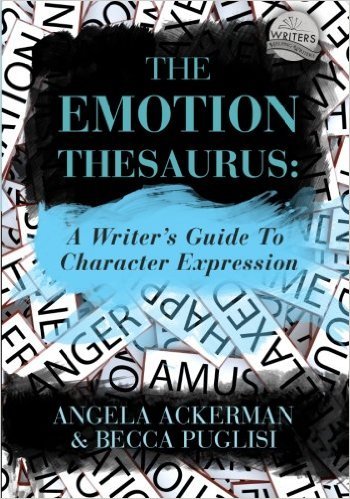On Writing Emotion
Today’s blog post comes to us from certified book coach Julie Artz.
Julie Artz
Certified Book Coach
Recently, one of my clients asked me for pointers on writing character emotion without falling into telling or cliché. As I wrote my answer, I realized it would make a great blog post because, let’s face it, writing emotion is hard. Here’s a technique I’ve come up with over the years that I hope you’ll find helpful.
A good place to start is with the Emotion Thesaurus by Angela Ackerman and Becca Puglisi. The book catalogs the physical responses, mental responses, and sensations associated with each of a broad list of emotions. A lot of authors (including me when I first started learning this technique) stop there. That's why you get a lot of anxiety described as sweaty palms & thumping hearts in books. But instead of just telling us the character's palms are sweaty, try showing the character wiping her hands on her skirt or shying away from shaking hands with someone, hiding those sweaty palms behind her back. Show her wiggling an eyebrow because she's in a cold sweat that's tickling her as it drips down her face. It's OK to do some physical cues – face getting hot, skin prickling, electricity running up the back of her legs – but don't only do that.
Once you have reviewed the entry/entries for the emotion you’re trying to convey, put yourself into the character's body and conduct a character interview. Why are you doing what you’re doing in this scene? What does it mean to you? How does it make you feel? Then dive deeper, leveraging your own experience with these emotions: How do your legs feel when you’re scared/nervous/angry? How does your stomach feel? What gestures might you make (tugging your hair when nervous, biting your lip or the inside of your cheek, shoving your hands in your pockets, tugging at the bottom of your shirt)? Different characters may tend to feel emotions in different parts of their bodies, and this can be a great way to differentiate voices in a multiple-point-of-view story.
Description also plays a role in getting emotion on the page. What your character notices about the world is influenced by how she’s feeling. For example, if I'm sad, and I look outside and see it's raining, I might feel the rain is heavy and depressing and awful. But if I'm happy, I look out the window and see how the water glistens on the leaves or how the intense green reminds me of my honeymoon in Belize. So you write the emotion not by putting feelings on the page, but by showing how the character's feelings (and their backstory) influence how they perceive everything in the world around them. The details you as the writer choose will help convey the character’s emotions without ever naming that emotion on the page.
Same goes for dialogue. An easy crutch to fall back on is using dialogue to convey emotion such as, “Mom, you make me so angry when you talk to me like that!” I’m not saying you can never do that. In fact, it can be very effective, especially when it’s more voicey than my example, but make sure it’s not the only way you’re conveying emotion.
If you can identify the emotions you want to convey, and then convey them with a mix of gestures, physical sensations, description, and dialogue, you’ll be well on your way to writing emotion that will keep your reader turning pages.
Next time you’re reading one of your favorite authors, pay attention to how they do this. Two of my current favorites, Leigh Bardugo and Maggie Stiefvater, are masters of showing emotion without naming it on the page. Their styles are very different (Bardugo is lusher and Stiefvatermore sparse in style), but they both end up delivering gripping stories in part because of how they write emotion.
What tips have you learned about conveying emotion in your writing? Which authors do you think do it particularly well? This topic could fill multiple books, so feel free to continue this discussion in the comments.


